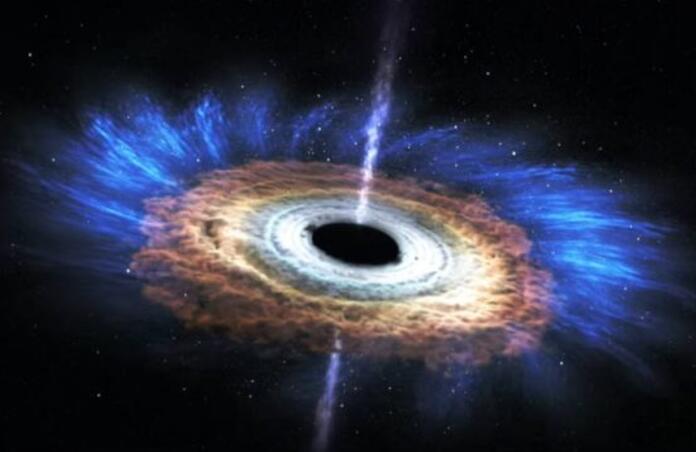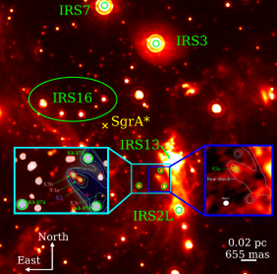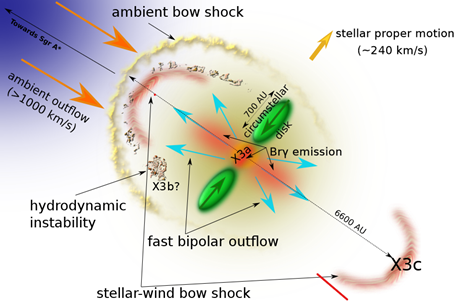Model Explains how very Young Stars can be so Close to Sagittarius A*

Unsurprisingly, the region immediately surrounding our galactic nucleus, Sagittarius A* (Sgr A*) is quite a turbulent environment. It is subject to dynamical gas flow within the gravitational field of Sgr A*, as well as to the constant bombardment of high energy photons, in the upper x-ray, lower UV domain, resulting in the swift destruction of particle clumps.
This is far from the necessary conditions needed for stellar formation, which require a far more quiescent and cold, dense gas to allow for particles to coagulate and eventually accumulate enough mass for gravitational collapse. As such, one would expect that the only stars that could exist in these regions are ones that are born in external stellar nurseries. These can then be caught within the field of Sgr A* and fall inwards. However, this has not been the case.
For about 20 years now, astronomers have been noting the presence of young stars located impossibly close to Sgr A*, since, given their age, they would have had to ignite not far from there. This particular study, led by Florian Peißker, details that the previously identified ‘bow shock’ source, x3, houses a stellar source. This marks the latest detection of an unusually young star located within the vicinity of Sgr A*. X3a is a ~15 M☉ star, found to orbit at a radial distance of 0.6pc. Based on the team’s estimates, the star is only a few 10s of kiloyears old.

The team analysed data from 4 telescopes, VLT, ALMA, the NTT telescope and the Keck observatory, finding the star to orbit Sgr A* with a proper motion of 244 ± 27 km/s. In addition to the star, they identified two further objects pertaining to the x3 system, being two blobs of hot gas. It is likely that these accompanying clumps are being accreted by x3a, which explains why the star is able to attain such a high mass.
Based on their measurements, the team suggest their own interpretation of how stars, x3a in particular, may end up so close to Sgr A*. Their model describes a scenario in which a dense molecular cloud manages to form in excess of 1 pc from the nuclear centre, while still migrating towards it. This dense disk is capable of star formation, as, by their assumption, it would be too optically thick to be disrupted by radiation bombardment as well as cool enough for stellar ignition. During the infall, x3 could have been separated from the rest of the cluster by tidal disruption. They propose that IRS 13, a cluster located a few light years from the present location of the x3 system, is the remanant of this original cluster.

Since the composition and dynamical motions of the dust surround the nucleus is comparable to that of other galaxies, it is possible that these young stars may be seen near other nuclei. As such, the team intend to follow up on these observations by testing their models in other environments, possibly using the JWST.
--
Journal Source: F. Peißker et al, X3: a high-mass Young Stellar Object close to the supermassive black hole Sgr A*, The Astronomical Journal, Vol. 944, No. 2, 2023
Cover Image: NASA/CXC/M.Weiss.
